![]()
This personal project was born of a lifelong pursuit of charting new paths upon the broad field of the artistic landscape, combined with an unexplained passion for vintage ground glass focusing loupes.
I’ll never stop looking for magical yet unexplored ways in which to see the world, and translating those findings into the language of photography; this is but one such journey.
A lot of people have used a plethora of things in place of a lens to make photographic images. Prior to this project, I can’t say I employed anything but a real photographic lens for this purpose. A couple of college experiments with pinholes was enough for me to know that it’s not my cup of tea, and image samples I’ve seen from DIY optics so far failed to excite my imagination.
Online I have found an endless number of instructions for all sorts of homemade optics, including those using a regular simple magnifying glass. Even drinking straws have been used to capture an image. I have not however found any mention of anyone using photographic loupes, whether those meant for ground glass focusing or negative examination.
Employing a wet plate medium for this project was a natural choice. Incidentally, I picked up my very first loupe in the spring of 2013, the same month that I learned wet plate. The next year, Will Dunniway, a prominent figure in the world of wet plate photography, really catalyzed my interest in loupes, and through the years helped the collection grow. Sadly, Will Dunniway passed away in early April of this year, the same month that my collection did in fact reach goal number. That prompted me to start writing the larger post and to finally make these images. Many shall miss Will, and these two posts are dedicated to his memory.
Technical challenges in creating these tintypes weren’t too numerous. The main task was affixing those loupes to my camera. Without a universal iris clamp, it would have been a minor nightmare to try out as many loupes as I did in order to select the dozen examples shown here. I’m glad to have experimented with plenty of vintage lenses in the past though, and for that task having a clamp like this is essential. Having it meant that I could swap my loupes in and out in a matter of seconds.
The working distance was also a bit of a trick to overcome. Most loupes have a miserably close focus of about one inch or so, and so their bottom edge needs to be almost right on the focal plane. This meant that the bellows on my 4×5 needed to be compressed as much as they could be, and still with some lenses I couldn’t achieve focus on infinity. That’s ok though, I wasn’t set on making landscapes or portraits anyway.
Also, due to such short focus, this optics turns out to have a very fast working aperture, and that means an extremely shallow depth of field. This worked nicely though to exaggerate bokeh when getting up-close with various small organic objects I picked up along my travels, with the flower being the only object specifically gathered for this project.
![]()
Above you can see the studio setup for most following close-up images, minus the large softbox out of frame view. I started by working outside, but a few plates had odd ghosting effects, caused by light reflecting from shiny brass or lacquered black surfaces. Keeping some of those plates, I later moved indoors for a more controlled environment. Since the glass in these is almost never symmetrical, in order to see possible differences, two images of each object were made with the same loupe: one image through the top, and one through the bottom.
Below images show two tintypes and the loupe they were captured with, with images positioned by the respective end through which they were shot. Each plate is 2.75×3.25in, which is a traditional 1/6th plate size; from that, you can judge the circle of coverage as well as the approximate scale of loupes pictured.
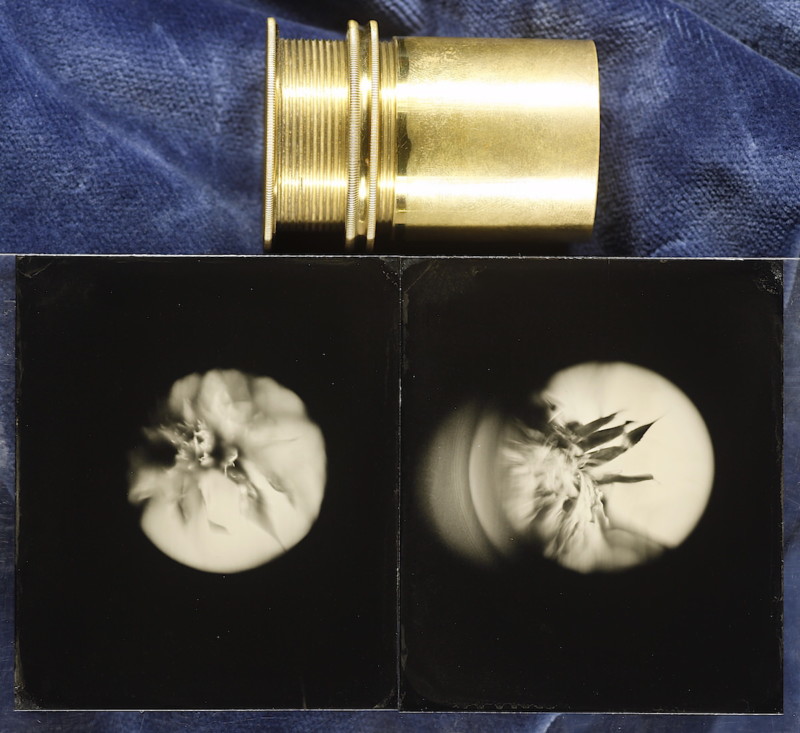
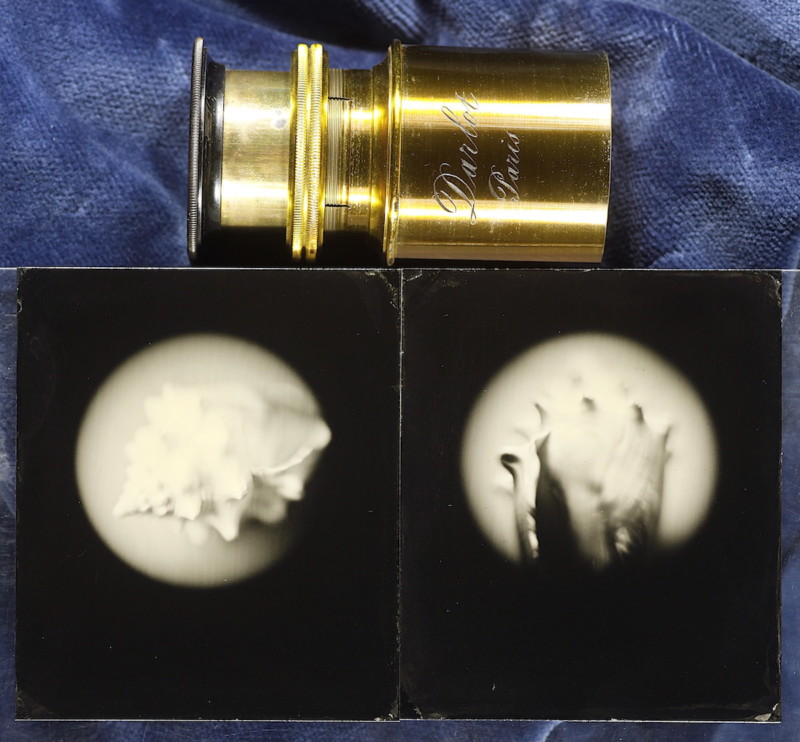
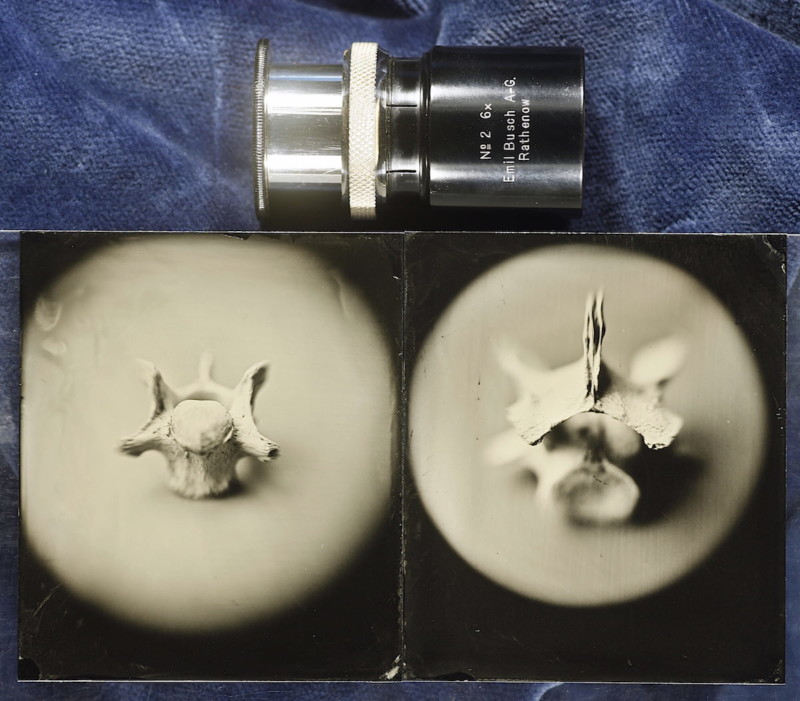
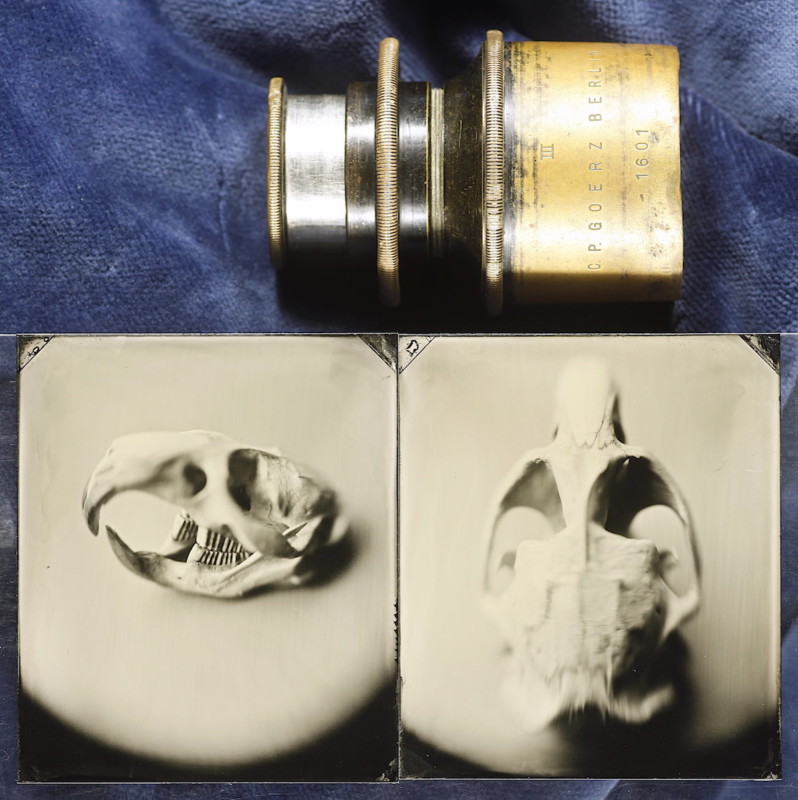
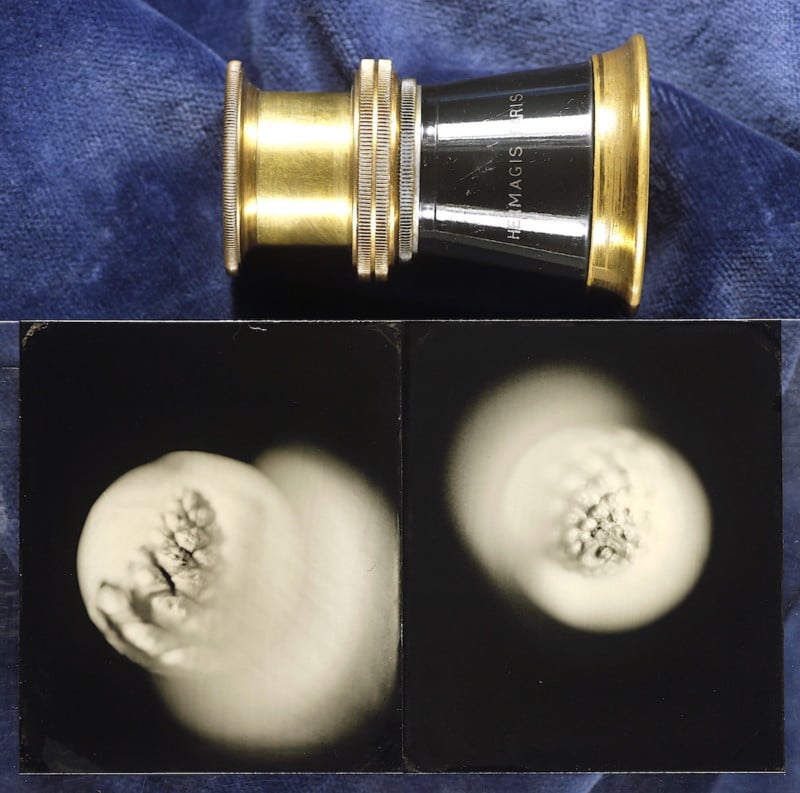


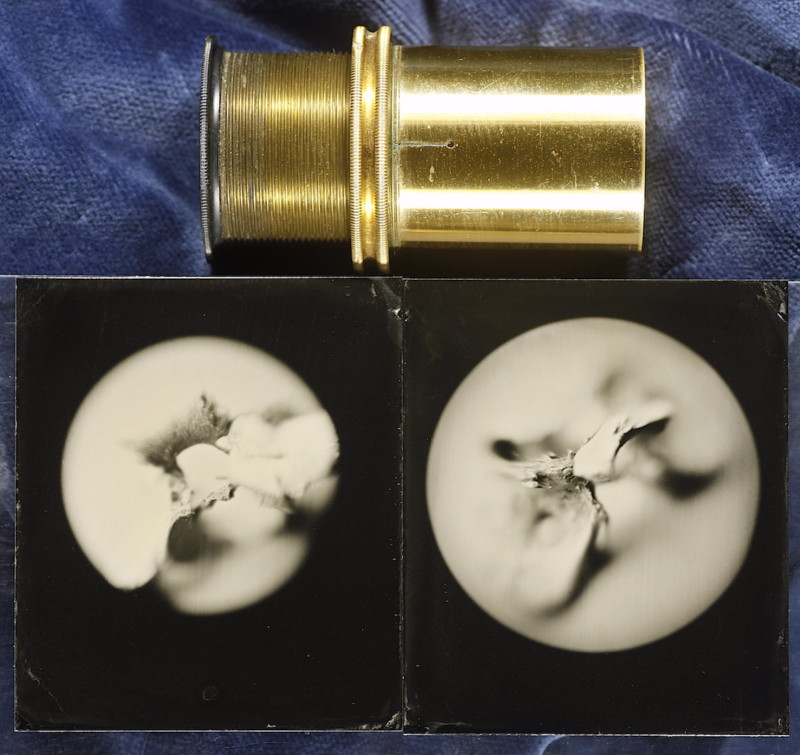

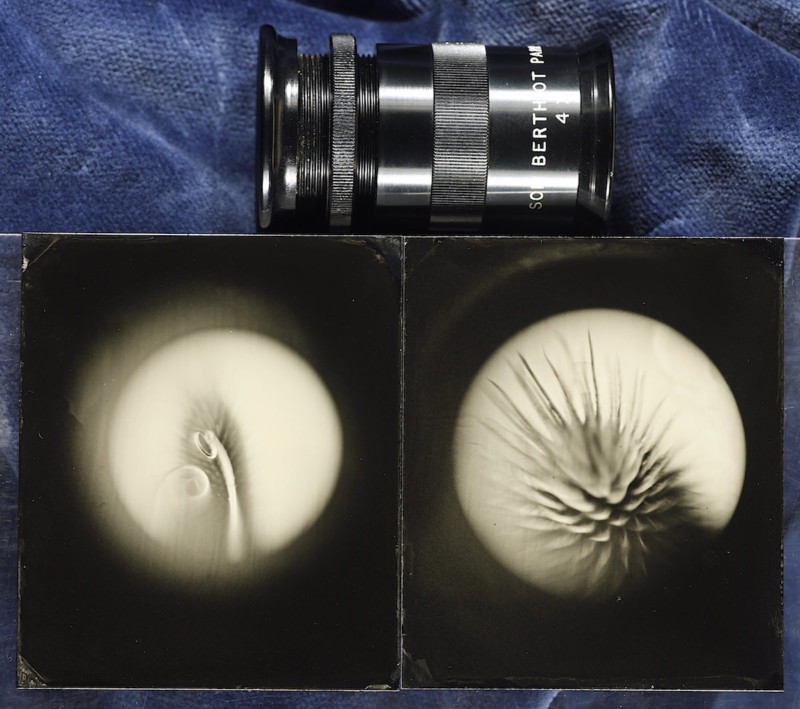
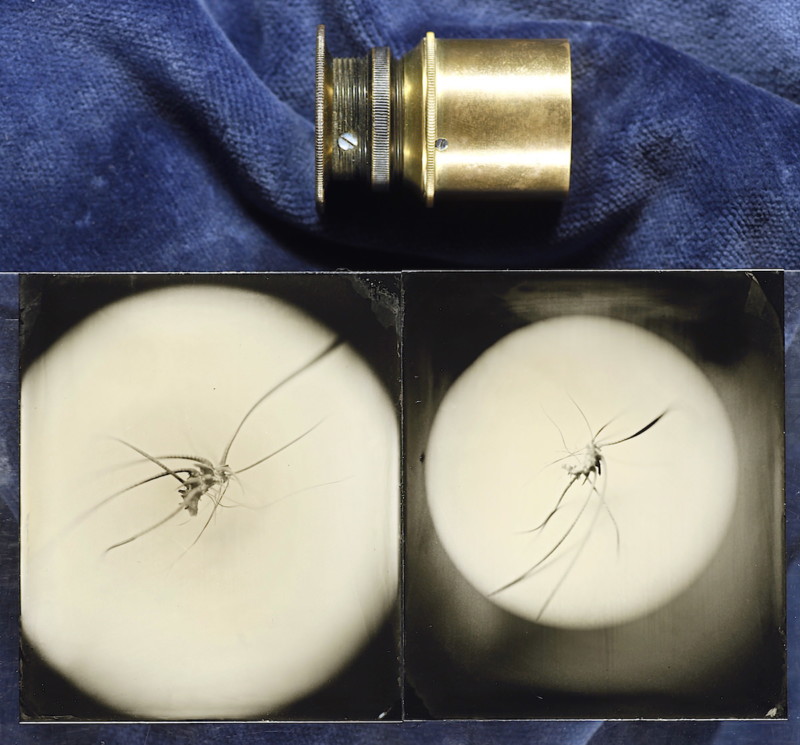
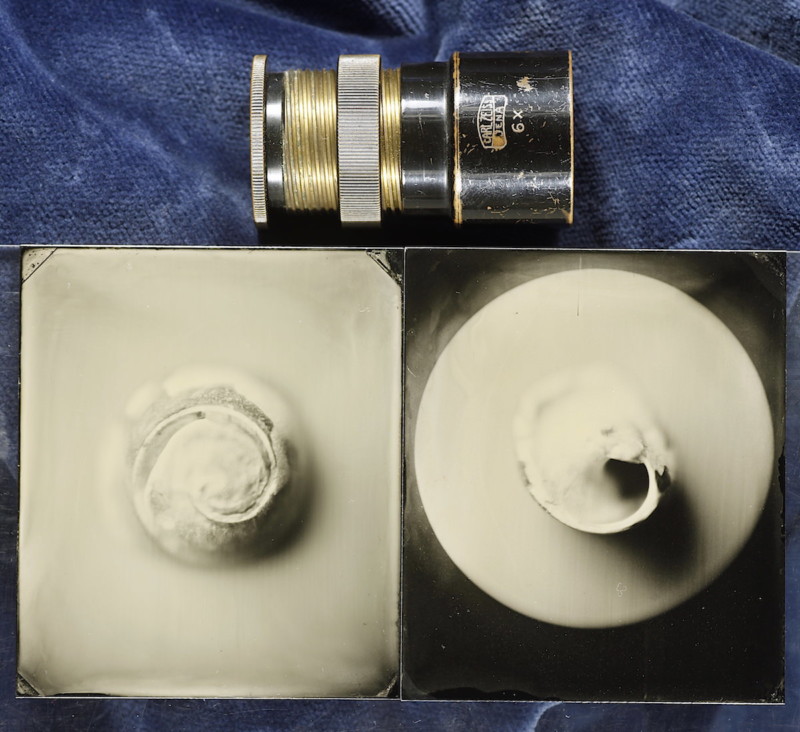
In the end, I picked 20 images to make this collage in a 12×18 inch frame.
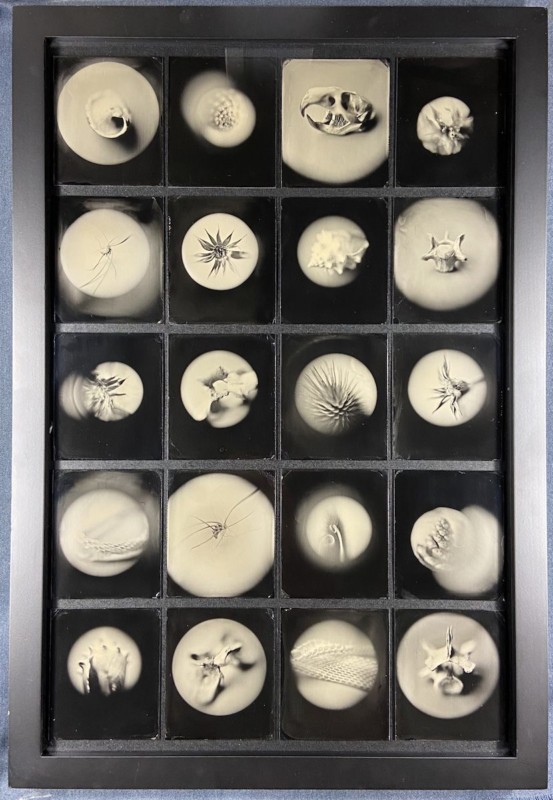
A great deal of thanks is in order for all the wonderful people from around the world who helped me grow my collection. I’ve had help from U.S., Poland, U.K, France, Germany, and even Thailand. You know who you are folks, and you know how much I appreciate you. Thank you!
I am not yet done collecting loupes, and am always looking for examples that I don’t have.
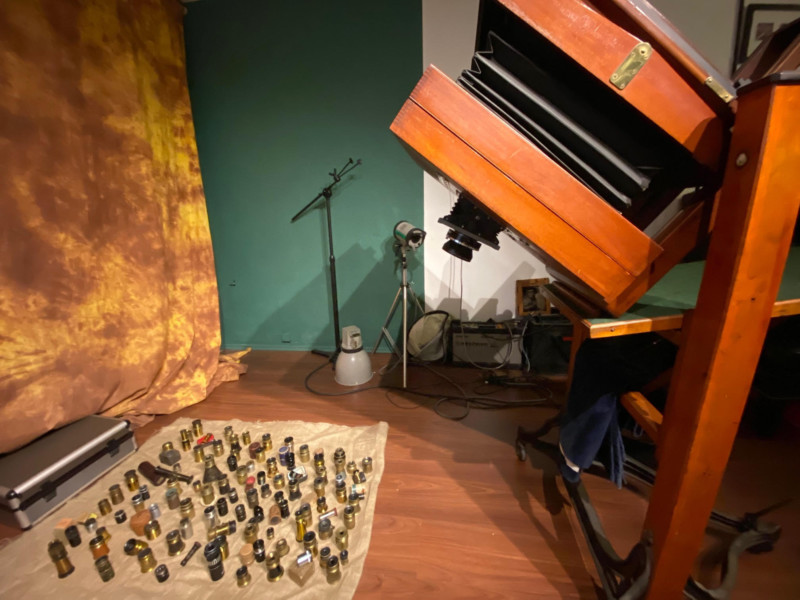
I’m not counting on being able to find every variation of every generation loupe made by every company ever, but I’d like to grow my collection by another 42% or so before I can call it quits for good. With a bit of help from decent kind people that goal isn’t as unattainable as it may seem.
The companion article to this one is: A Brief History of Ground Glass Focusing Loupes
About the author: Anton Orlov is an analog photographer and the man behind The Photo Palace, a 35-foot school bus that has been converted into a darkroom and presentation area for educational and artistic purposes. He previously created a transparent camera and the world’s smallest tintypes. Visit his website for more of his work and writing. This article was also published here.
Author: Anton Orlov
Source: Petapixel



